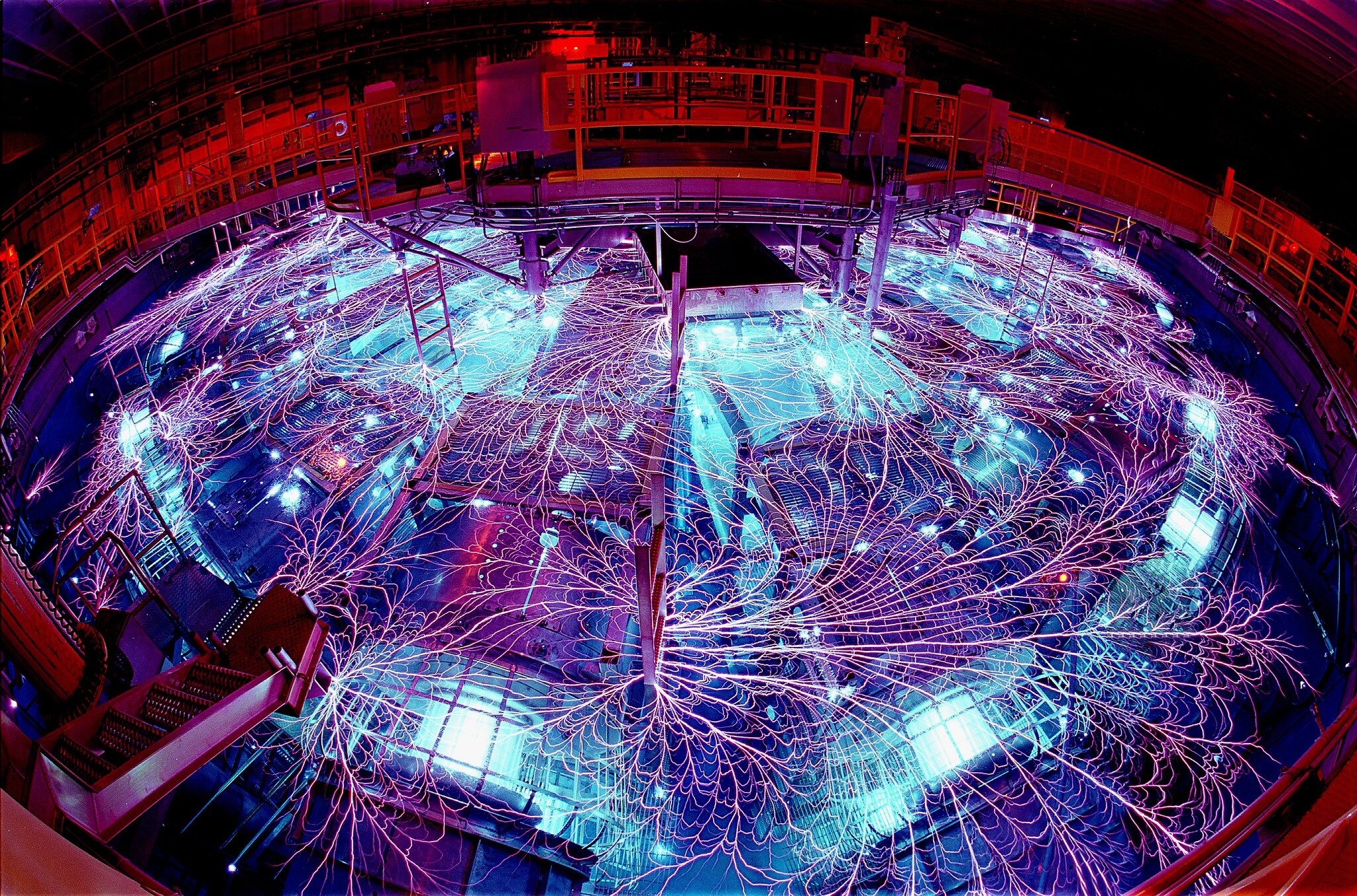Sarah Stewart on a New Scenario for How the Moon Formed
Sarah Stewart is a Professor in the Department of Earth and Planetary Sciences at the University of California Davis. She explains how, following a massive impact with another body, the Earth formed a synestia - an inflated disk of gas in which the impacting body and Earth were thoroughly mixed, and out of which the Moon and a new Earth solidified.
Listen to the podcast here or wherever you listen to podcasts.
Scroll down for illustrations that support the podcast. And add your comments at the bottom of the page.
Note - playing the podcast is not supported on Internet Explorer; please use any other browser, or listen on Spotify, Apple Podcasts, etc.
Podcast Illustrations
A post-collision synestia is much bigger than a planet, as this image shows. Its initial shape is a biconcave disc, which evolves as it cools. The Moon accretes within the synestia over a period of about 1,000 years following the impact.
Courtesy of Simon Lock
A. Sarah Stewart’s model begins with a giant impact that tilts the Earth’s spin axis between 60 to 80 degrees from the ecliptic and leaves the Earth with a 2- to 3-hour day. The Earth is spinning so quickly that its equatorial axis is twice the length of its polar axis.
B. After the Laplace plane transition (shown in this simulation), angular momentum is transferred away from the Earth-Moon system, and the Earth becomes spherical. The Earth’s obliquity is near present day, 23.5 degrees, and the inclination of the Moon’s orbit is 30 degrees.
C. After the Cassini state transition (shown in this simulation), the Moon’s orbit is lowered to the present-day 5 degrees from the ecliptic plane.
Animations based on Ćuk et al. Nature 539, 402–406(2016)
The Sandia Labs Z-machine, located in Albuquerque, New Mexico, concentrates electrical energy and turns it into short pulses of enormous power, which are then used to heat a target to as high as 1.8 million degrees C. Sarah Stewart and her colleagues use this machine with Earth minerals at the target to simulate conditions following a Moon-forming Earth impact.
Courtesy of Randy Montoya
Artist’s impression of a collision with a Mars-sized body based on impact simulations.
Impact simulations described in Canup & Asphaug, Nature (2001) 412, 708, and Canup, Icarus 168 (2004) 433
Courtesy of National Geographic
Simulation showing the accretion of the Moon within a synestia. Initially, the synestia is larger than the Moon’s orbit. As the synestia cools and contracts, the Moon emerges and becomes a separate body in orbit around the synestia. Eventually, the synestia cools to form the Earth. The Moon’s chemistry can be explained by formation at the high pressures and temperatures of the synestia.
Courtesy of Sarah Stewart and NASA PIA 20700
Simulation of a giant body impacting a rapidly spinning Earth to create a synestia.
Based on the scenario described by Cuk & Stewart, Science (2012) 338, 1047
Adler Planetarium and National Center for Supercomputing Applications
Simulation of an impact with a different set of parameters viewed as the canonical scenario for a Moon-forming impact ocurring when the Earth is almost fully accreted. It is based on the simulations described in the papers referred to below, which predated the 2017 development of the synestia scenarios.
Canup & Asphaug, Nature (2001) 412, 708; Canup, Icarus 168 (2004) 433
National Center for Supercomputing Applications






